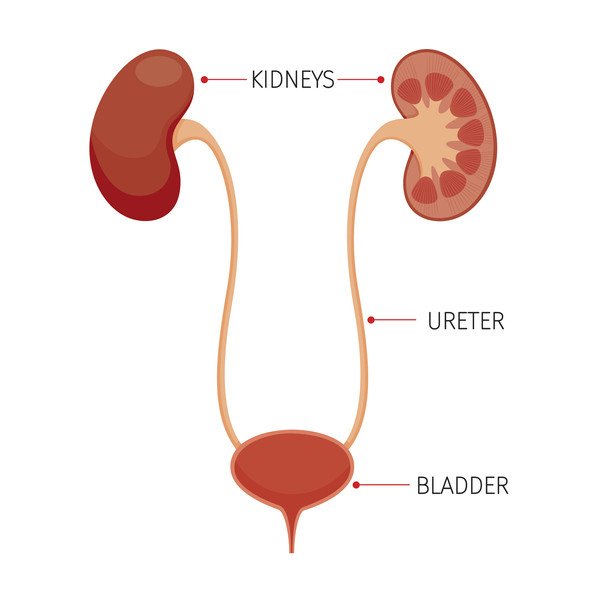The originating document has been archived. We cannot confirm the completeness, accuracy, or currency of the content.
Cystoscopy
Medically reviewed by Drugs.com. Last updated on Mar 22, 2025.
What is a Cystoscopy?

Cystoscopy is a procedure that allows doctors to look inside the bladder and the urethra, the tube that carries urine from the bladder. A cystoscope is a tube-like instrument with lenses, a camera and a light on one end and an eyepiece on the other. With a cystoscope, your doctor can examine the urethra and the lining of the bladder. If necessary, your doctor can pass surgical instruments through the cystoscope to perform specific procedures. In most cases, a simple cystoscopy lasts 5 to 10 minutes. Procedures that are more complex take longer.
What It's Used For
Cystoscopy checks inside the bladder for tumors, sites of bleeding, signs of infection, stones (calculi) and causes of bladder outlet obstruction. It also can be used to:
- Remove a sample of a bladder tumor to be examined in a laboratory — This procedure is called a biopsy.
- Remove and treat some types of bladder tumors
- Obtain a urine sample from the ureters (two tubes that carry urine from each kidney to the bladder) — This enables doctors to check for infection or tumor involving only one kidney.
- Remove a stone (calculi) from the bladder or ureter
- Insert a stent (a small tube) into the ureter to widen the pathway and relieve an obstruction (caused by a stone, scarring or a narrowing of the ureter)
- Perform an X-ray procedure in which the cystoscope carries a dye to the kidney to show the path of urine and pinpoint areas of obstruction — This procedure is called retrograde pyelography.
Preparation
Your doctor will review your medical and surgical histories, current medications and history of allergies. If you may be pregnant, tell your doctor before the procedure.
You will need to drink plenty of fluids before the procedure. Depending on the reason for your cystoscopy, you may also need to use enemas and/or laxatives to clear your bowels.
In most cases, you will be awake during the procedure. If you need general anesthesia (meaning you will be unconscious during the procedure), your doctor will tell you not to eat or drink for a specific amount of time before the procedure.
You may be asked to provide a urine sample before the procedure to check for a urinary tract infection. You may be given antibiotics prior to the procedure. If you have a heart condition such as a heart valve, or have an artificial prosthesis (e.g. hip or knee), tell your doctor before the procedure as you may need additional antibiotics.
How It's Done
Your vital signs (temperature, pulse, respirations, blood pressure) will be monitored throughout the procedure. You lie on your back on an examination table, bend your knees and slide your feet into two metal stirrups. The area around your urethra is cleaned thoroughly. An intravenous (IV) line may be inserted into one of your veins to administer fluids and medications, including drugs that allow you to remain awake and pain-free.
The doctor inserts a lubricated cystoscope through your urethra into your bladder. A sterile liquid is pumped into your bladder to expand it and give your doctor the best possible view. You may see pictures from the cystoscope camera transmitted onto a nearby video screen. You also may feel an urge to urinate, or experience a sensation of coolness or fullness in your bladder.

Depending on the reason for your cystoscopy, your doctor may examine the inside of your urinary tract or pass instruments through the cystoscope to perform a specific procedure.
You may have some temporary swelling in your urethra that could make urinating difficult. In this case, a thin tube is inserted through your urethra and into your bladder to allow urine to get out until the swelling subsides.
You will receive pain medication to relieve any discomfort, and your IV will be removed. If you had an outpatient procedure, you will be allowed to leave when you have recovered enough to go home safely and have voided.
Follow-Up
After some cystoscopy procedures, you may see a small amount of blood in the urine. This should stop within 24 hours. Also, for the first day or two, you may notice a burning sensation when you urinate, or you may need to urinate more often than usual. To help flush your urinary tract and prevent a urinary tract infection, drink six to eight glasses of water every day.
Ask your doctor when you can resume vigorous exercise and sexual activity. If you had a biopsy or urine samples taken during your procedure, call your doctor a few days after your procedure to find out the results.
Risks
There is some risk of abnormal bleeding and urinary tract infection. There is minimal risk that the cystoscope may injure or puncture some part of your urinary tract.
When To Call a Professional
After cystoscopy, call your doctor immediately if:
- Urinating is painful or difficult, or you can't urinate at all
- Your urine is red or has blood clots
- You develop a fever, with or without chills
Additional Info
Urology Care Foundation
https://www.urologyhealth.org/
National Institute of Diabetes & Digestive & Kidney Disorders
https://www.niddk.nih.gov/
Image: MatooMi/Getty Images
Further information
Always consult your healthcare provider to ensure the information displayed on this page applies to your personal circumstances.
